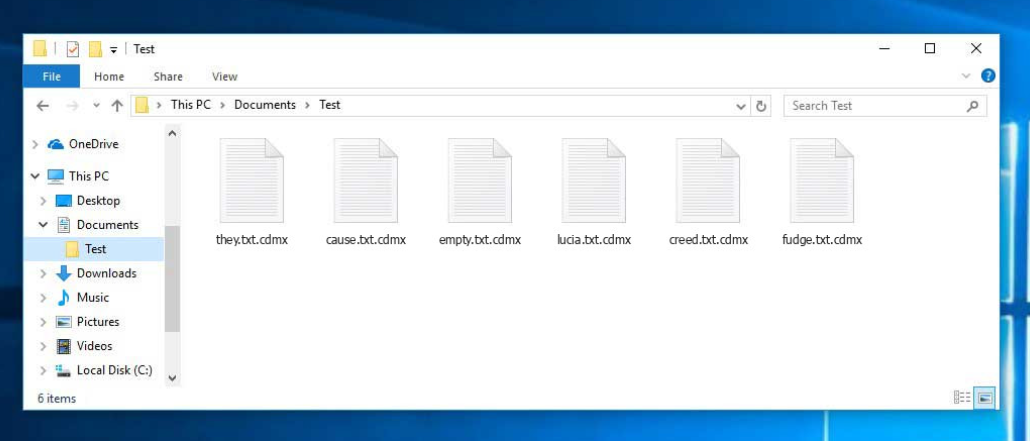CDMX Ransomware [Virus Removal Guide]
Because of its association with the Djvu family, Cdmx could potentially be distributed alongside data-stealing malware such as RedLine, Vidar, or similar threats. To illustrate Cdmx’s file renaming procedure, it converts file names like “1.jpg” into “1.jpg.cdmx”, “2.png” into “2.png.cdmx”, and so forth.
.cdmx file virus is thought to be a highly severe malware infection, categorized as ransomware. You may not necessarily have heard of or ran into it before, and it could be particularly shocking to see what it does. Data encrypting malware can use strong encryption algorithms for the encryption process, which prevents you from accessing them any longer. Ransomware is thought to be one of the most harmful threats you can have because decrypting data is not always likely. You will be given the option of paying the ransom for a decryptor but that isn’t the best idea.
ATTENTION!
Don’t worry, you can return all your files!
All your files like pictures, databases, documents and other important are encrypted with strongest encryption and unique key.
The only method of recovering files is to purchase decrypt tool and unique key for you.
This software will decrypt all your encrypted files.
What guarantees you have?
You can send one of your encrypted file from your PC and we decrypt it for free.
But we can decrypt only 1 file for free. File must not contain valuable information.
You can get and look video overview decrypt tool:
hxxps://we.tl/t-99MNqXMrdS
Price of private key and decrypt software is $1999.
Discount 50% available if you contact us first 72 hours, that’s price for you is $999.
Please note that you’ll never restore your data without payment.
Check your e-mail “Spam” or “Junk” folder if you don’t get answer more than 6 hours.To get this software you need write on our e-mail:
support@freshingmail.topReserve e-mail address to contact us:
datarestorehelpyou@airmail.ccTo get this software you need write on our e-mail:
*****@*****.tldReserve e-mail address to contact us:
*****@*****.tldYour personal ID:
0841ASdwfYHR8yMtLGrB9rZjQhmbbqx2yb4l1OW4FLksVeccYour personal ID:
How is ransomware spread
Most frequent ransomware spread methods are via spam emails, exploit kits and malicious downloads. Since there are a lot of people who are not cautious about opening email attachments or downloading files from sources that are less then trustworthy, ransomware distributors don’t have to come up with more elaborate methods. More elaborate ways could be used as well, although not as frequently. All criminals need to do is use a well-known company name, write a generic but somewhat convincing email, add the malware-ridden file to the email and send it to potential victims. Frequently, the emails will mention money, which people are more inclined to take seriously.
Criminals also commonly pretend to be from Amazon, and tell potential victims about some strange activity noticed in their account, which would which would make the user less careful and they would be more inclined to open the attachment. Because of this, you need to be cautious about opening emails, and look out for signs that they could be malicious. Check the sender to see if it is someone you know. Don’t hurry to open the attachment just because the sender seems familiar to you, first you will have to double-check if the email address matches. Those malicious emails also frequently contain grammar mistakes, which tend to be pretty obvious. The greeting used could also be a hint, a real company’s email important enough to open would use your name in the greeting, instead of a generic Customer or Member. Some file encoding malicious programs may also use weak spots in systems to enter. A program has certain weak spots that could be exploited for malware to get into a computer, but vendors patch them soon after they are discovered. As has been shown by WannaCry, however, not everyone rushes to install those updates. Because a lot of malicious software makes use of those vulnerabilities it is important that you regularly update your software. Patches may also be permitted to install automatically.
How does it behave
Your files will be encoded as soon as the file encrypting malware infects your system. If you have not noticed anything strange until now, when you’re cannot access files, you’ll realize that something has occurred. You’ll see that all affected files have weird extensions added to them, and that helps people figure out what kind of data encrypting malware it is. Powerful encryption algorithms could have been used to encode your files, and there’s a possibility that they may be permanently locked. In the ransom note, crooks will explain that they have encrypted your files, and offer you a method to decrypt them. The decryption utility offered won’t be for free, obviously.
A clear price should be shown in the note but if it’s not, you’d have to contact crooks via their given email address to find out how much the decryptor costs. For the reasons already discussed, paying the criminals isn’t the encouraged choice. Carefully consider all your options through, before even thinking about buying what they offer. Try to recall whether you have ever made backup, maybe some of your files are actually stored somewhere. Or maybe there’s a free decryption tool. A free decryptors might be available, if the ransomware was decryptable. Consider that before you even think about giving into the requests. A much smarter purchase would be backup. If your most important files are stored somewhere, you just erase .cdmx file virus virus and then recover files. Now that you how how dangerous data encrypting malicious program can be, try to dodge it as much as possible. At the very least, stop opening email attachments randomly, keep your software updated, and only download from safe sources.
.cdmx file virus removal
If you want to completely terminate the file encoding malicious program, a malware removal tool will be required to have. If you have little experience when it comes to computers, you may accidentally cause further damage when trying to fix .cdmx file virus by hand. Thus, picking the automatic method would be what we recommend. The software would not only help you take care of the infection, but it may also prevent similar ones from entering in the future. So look into what matches your requirements, install it, perform a scan of the device and ensure to eliminate the ransomware, if it is found. Bear in mind that a malware removal tool is meant to terminate the threat and not to assist in data recovery. If your system has been fully cleaned, unlock .cdmx file virus files from backup, if you have it.
List of local authorities where ransomware attacks should be reported (choose one depending on your residence address):
USA – Internet Crime Complaint Centre IC3
United Kingdom – Action Fraud
Spain – Policía Nacional
France – Ministère de l’Intérieur
Germany – Polizei
Italy – Polizia di Stato
The Netherlands – Politie
Poland – Policja
Portugal – Polícia Judiciária
Offers
Download Removal Toolto scan for .cdmxUse our recommended removal tool to scan for .cdmx. Trial version of provides detection of computer threats like .cdmx and assists in its removal for FREE. You can delete detected registry entries, files and processes yourself or purchase a full version.
More information about SpyWarrior and Uninstall Instructions. Please review SpyWarrior EULA and Privacy Policy. SpyWarrior scanner is free. If it detects a malware, purchase its full version to remove it.

WiperSoft Review Details WiperSoft (www.wipersoft.com) is a security tool that provides real-time security from potential threats. Nowadays, many users tend to download free software from the Intern ...
Download|more


Is MacKeeper a virus? MacKeeper is not a virus, nor is it a scam. While there are various opinions about the program on the Internet, a lot of the people who so notoriously hate the program have neve ...
Download|more


While the creators of MalwareBytes anti-malware have not been in this business for long time, they make up for it with their enthusiastic approach. Statistic from such websites like CNET shows that th ...
Download|more
Quick Menu
Step 1. Delete .cdmx using Safe Mode with Networking.
Remove .cdmx from Windows 7/Windows Vista/Windows XP
- Click on Start and select Shutdown.
- Choose Restart and click OK.

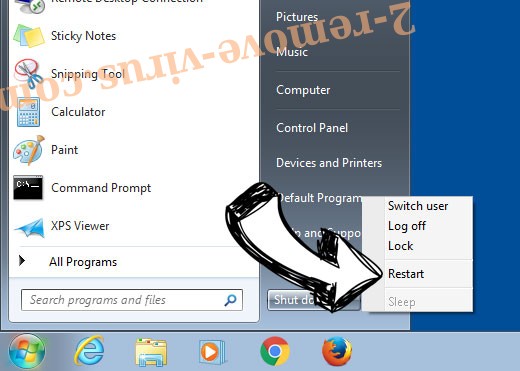
- Start tapping F8 when your PC starts loading.
- Under Advanced Boot Options, choose Safe Mode with Networking.

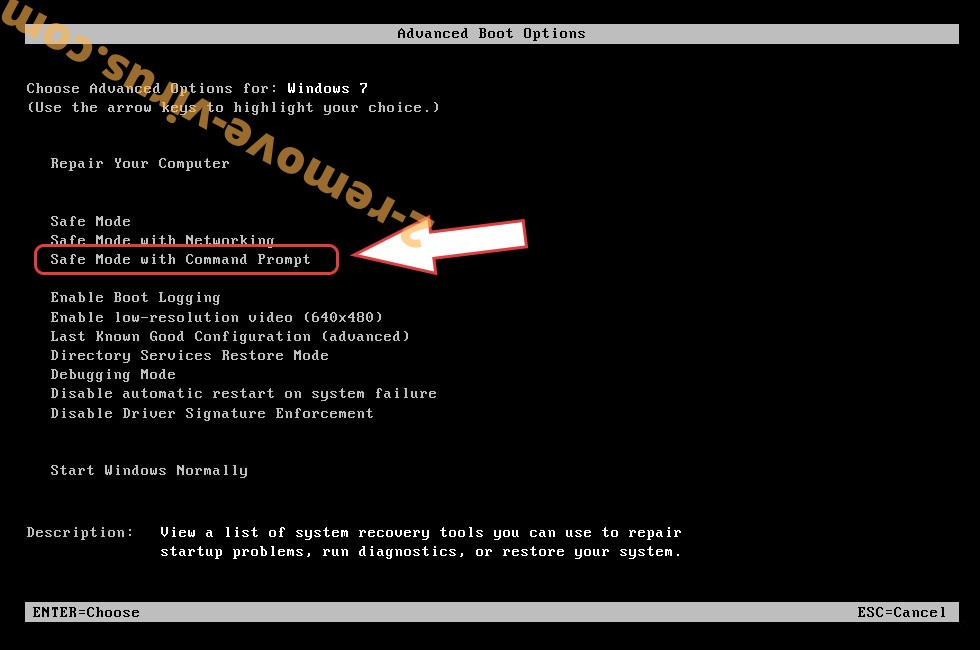
- Open your browser and download the anti-malware utility.
- Use the utility to remove .cdmx
Remove .cdmx from Windows 8/Windows 10
- On the Windows login screen, press the Power button.
- Tap and hold Shift and select Restart.

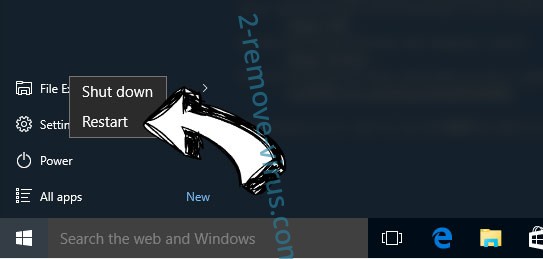
- Go to Troubleshoot → Advanced options → Start Settings.
- Choose Enable Safe Mode or Safe Mode with Networking under Startup Settings.

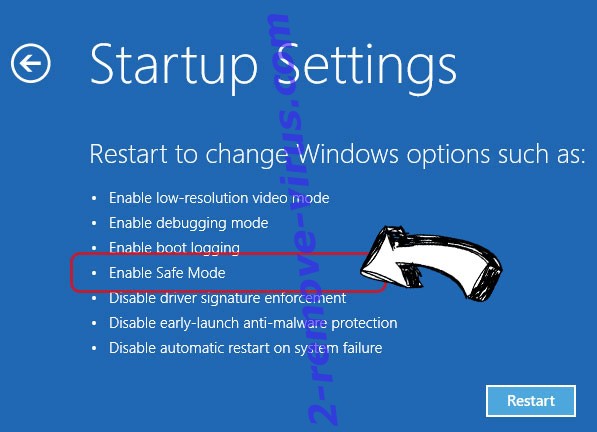
- Click Restart.
- Open your web browser and download the malware remover.
- Use the software to delete .cdmx
Step 2. Restore Your Files using System Restore
Delete .cdmx from Windows 7/Windows Vista/Windows XP
- Click Start and choose Shutdown.
- Select Restart and OK


- When your PC starts loading, press F8 repeatedly to open Advanced Boot Options
- Choose Command Prompt from the list.

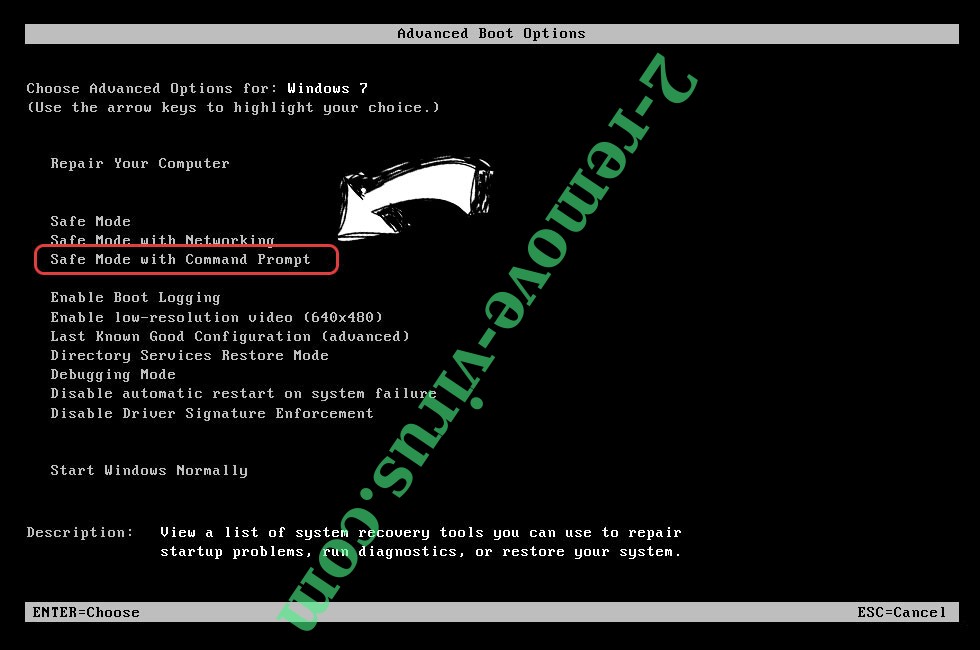
- Type in cd restore and tap Enter.

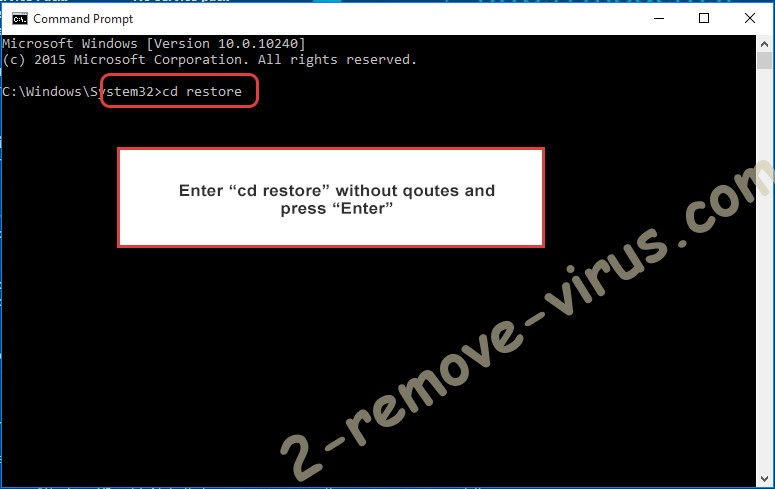
- Type in rstrui.exe and press Enter.

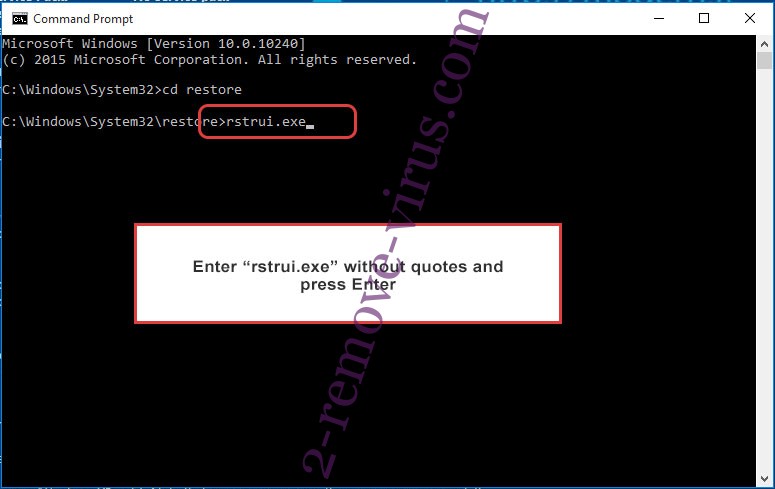
- Click Next in the new window and select the restore point prior to the infection.

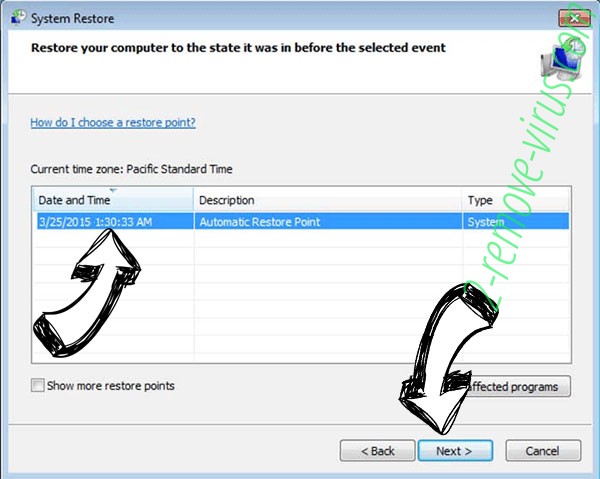
- Click Next again and click Yes to begin the system restore.

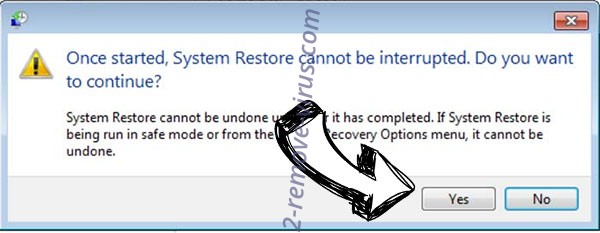
Delete .cdmx from Windows 8/Windows 10
- Click the Power button on the Windows login screen.
- Press and hold Shift and click Restart.


- Choose Troubleshoot and go to Advanced options.
- Select Command Prompt and click Restart.

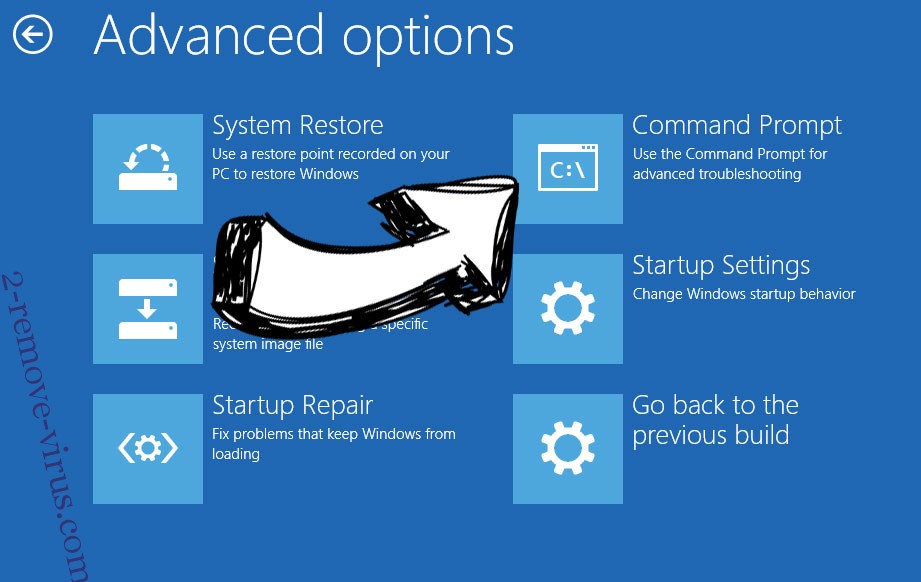
- In Command Prompt, input cd restore and tap Enter.


- Type in rstrui.exe and tap Enter again.


- Click Next in the new System Restore window.

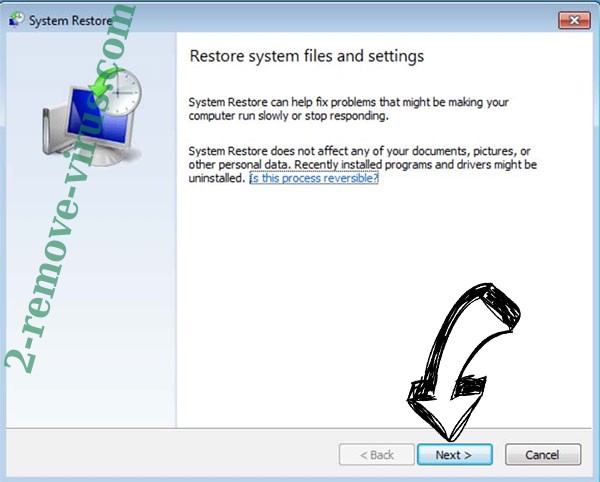
- Choose the restore point prior to the infection.


- Click Next and then click Yes to restore your system.


Site Disclaimer
2-remove-virus.com is not sponsored, owned, affiliated, or linked to malware developers or distributors that are referenced in this article. The article does not promote or endorse any type of malware. We aim at providing useful information that will help computer users to detect and eliminate the unwanted malicious programs from their computers. This can be done manually by following the instructions presented in the article or automatically by implementing the suggested anti-malware tools.
The article is only meant to be used for educational purposes. If you follow the instructions given in the article, you agree to be contracted by the disclaimer. We do not guarantee that the artcile will present you with a solution that removes the malign threats completely. Malware changes constantly, which is why, in some cases, it may be difficult to clean the computer fully by using only the manual removal instructions.
